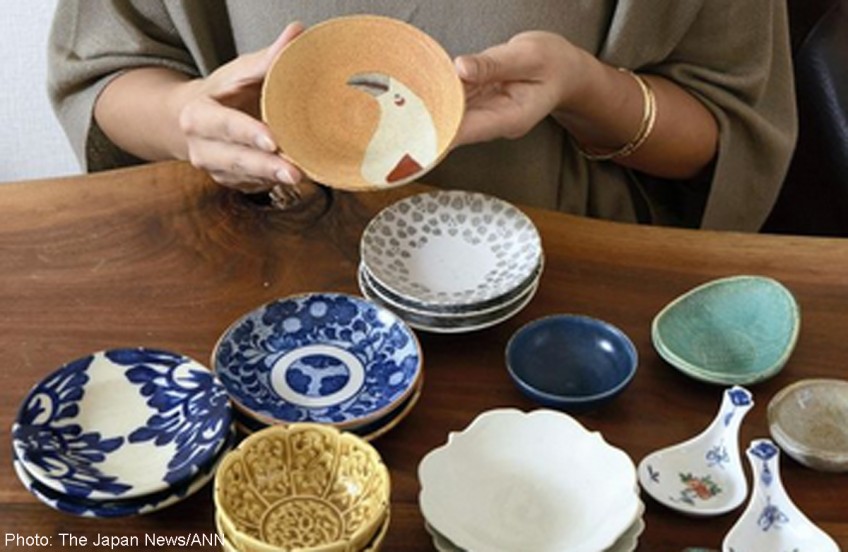Small plates enhance dining pleasure

Dining plates small enough to fit in the palm of an adult's hand can be used in a versatile manner at the dining table.
And with interesting motifs, these plates, called mamezara (tiny plates) in Japanese, can become conversation pieces for diners.
The plates, even those produced by artists, also may be quite reasonably priced.
Although they may be regarded as Japanese tableware, many have interesting motifs and shapes suited for Western and Chinese cuisines, too.
They can be used for individual servings, to serve soy sauce, salt or pickled vegetables, or even as chopstick rests.
"If you choose tableware by yourself, you feel that the joy of dining has already begun before you eat. It's fulfilling," tableware coordinator Fumika Endo said.
Endo suggests using these plates in a book, titled "Mamezara no Aru Kurashi" (Life with mamezara plates), recently published by Takarajimasha, Inc.
The book features about 500 plates with examples of how to place food on them and includes such information as the names of their producers and shops that sell them.
Mamezara plates are usually six to nine centimeters in diameter, but Endo's book covers larger ones, too, up to 13 centimeters in diameter.
"I hope this book will help if you usually eat prepared food that you buy at stores straight from their containers or when you have no idea how to arrange food on plates," Endo said.
In addition to tips on how to use the plates on the dining table, her book also suggests various other uses, such as to hold aromatherapy substances, accessories or flowers.
The book also includes information about major pottery fairs and antique fairs, where visitors can buy the plates.
Endo has provided many suggestions on how to coordinate tableware, tablecloths and other dining-related accessories to her customers.
She learned about tableware and other dining accessories when she was a cooking school student, and felt the work of tableware coordinators was more interesting than cooking.
After graduating from the school, she began introducing tableware for cooking books, magazines and advertisements. Later, she began publishing books to help people enjoy dining more.